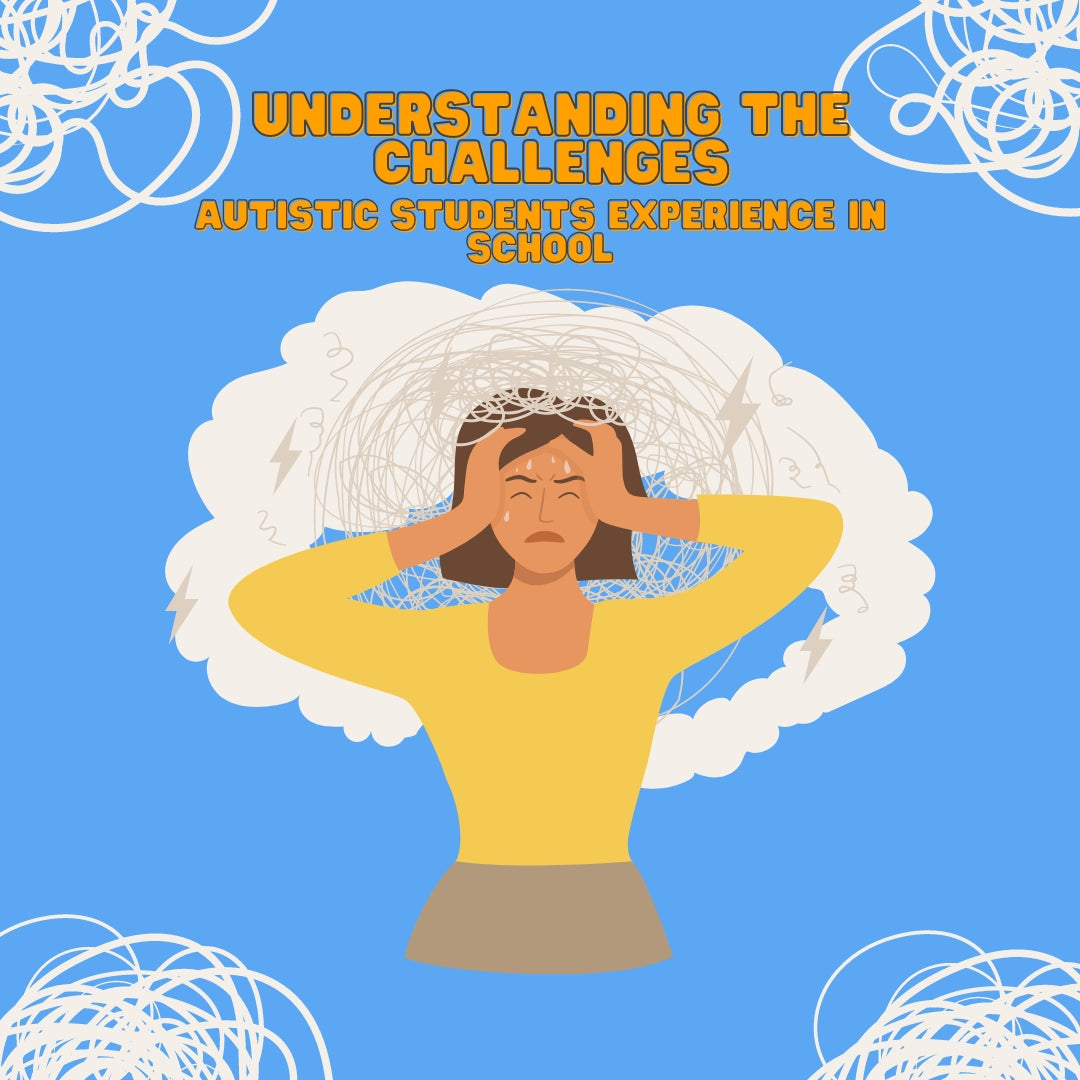
Autism spectrum disorder (ASD) is a complex neurological condition that affects social interaction, communication, interests, and behavior. For autistic children, the education system can present a series of challenges. Understanding these challenges and implementing effective strategies can help create an inclusive, nurturing environment.
The Day-to-Day Experience
Imagine a world where everyday sounds are magnified multiple times, where the flicker of lights feels like a spotlight. To an autistic child, the usual classroom can often feel like this intensified universe. For instance, while a neurotypical child might not notice the buzz of a fluorescent light, an autistic child might find it piercing. Every new interaction requires immense mental processing.
Adaptive Strategy: Schools can introduce sensory-friendly zones, rooms with dimmable lights and soft furnishings, where students can go to for a break. Noise-canceling headphones can also be provided during particularly noisy activities.
Misunderstandings about Autism
Autism is not one-size-fits-all. Hollywood and mainstream media often perpetuate stereotypes – the math genius, the musical prodigy. But just like neurotypical students, autistic students are individuals. Generalized myths and popular culture often simplify the spectrum, portraying autistic children in a limited light. However, they are diverse in their talents and needs. To effectively support them, educators must view each child as a unique individual and look beyond stereotypes.
Classroom Challenges
Customized Learning Environment: Each autistic child has specific triggers. For some, it could be the sound of a bell; for others, it might be the touch of craft paper. Tailoring classroom settings to minimize these stressors, such as having quiet zones or providing alternate materials, can make a vast difference.
In a conventional classroom, autistic students might struggle with:
-
Sensory Sensitivities: Bright lights, loud noises, or even certain textures can be overwhelming.
-
Social Interactions: Group tasks can be daunting when navigating social cues doesn't come naturally.
-
Routine Adherence: Any change in the regular schedule can be distressing.
The Role of Teacher Training
Teachers are the frontline warriors in the education system. Specialized training can equip them with tools and strategies to support and nurture autistic students effectively.
Beyond the Curriculum: Effective teacher training should go beyond traditional teaching methods. It should encompass understanding autism, recognizing early signs of distress, and implementing proactive strategies to assist students.
Social Interaction Struggles
Group projects, recess, or even simple peer interactions can be stress points. Autistic children often find it challenging to interpret non-verbal cues or navigate group dynamics, making these interactions less intuitive.
The Complexity of Play: While recess or group tasks may seem straightforward, they're a maze of unspoken rules for many autistic students. Creating buddy systems or providing explicit instructions for group dynamics can offer guidance.
The Overlooked Strengths
Autistic children often possess unique talents and strengths. Some might have an exceptional memory, while others may excel in arts or sciences. Recognizing and nurturing these strengths can pave the way for their success.
Spotlight on Abilities: An autistic student's hyper-focus can lead to excellence in specific subjects or hobbies. By providing platforms to showcase these talents, schools can boost self-esteem and foster a love for learning.
Using Visual Supports
A Picture is Worth a Thousand Words: Visual aids like charts, schedules, and pictorial cues can be instrumental. Visual aids, whether in the form of illustrated timetables or pictorial instructions, can simplify complex concepts. Such tools not only aid comprehension but also provide predictability in daily routines.
Understanding Meltdowns
The Underlying Factors: Meltdowns often stem from accumulated stressors. By recognizing the early signs and understanding their root causes, educators can implement calming techniques or offer safe spaces for students to regroup.
Meltdowns are not tantrums. They are reactions to overwhelming stimuli or situations. Recognizing triggers and having strategies in place can help manage such situations with compassion.
Standardized Testing
Beyond the Score: While standardized tests aim to gauge academic performance, they might not always capture the true capabilities of an autistic child. Accommodations like extended time, a quieter environment, or alternate assessment methods can offer a more accurate measure. Alternative assessment forms, such as project-based evaluations or oral presentations, can provide a broader insight into their skills. Knowing the individual and their progress is the best indicator of growth and academic skill.
Building a Supportive Community
Creating Allies: A supportive school environment is one where differences are celebrated. Peer education about autism can foster empathy and understanding. When classmates recognize and appreciate differences, it leads to a more inclusive and harmonious learning environment. Encourage peer understanding, foster inclusion, and ensure every student feels valued.
Importance of an Individualized Education Program (IEP)
An IEP is tailored to an autistic student's specific needs. It can be a roadmap to ensure they receive appropriate support, from specialized teaching strategies to therapy sessions.
Transitioning Between School Levels
A Journey, Not a Leap: The shift between school levels is more than just a new grade; it's an entirely new world for many autistic students. Smooth transitions can be facilitated through phased introductions, familiarizing students with new environments and routines slowly.
Incorporating a understanding of autism within the educational system will not only benefit autistic students but also enrich the learning environment for all. By embracing diversity and providing tailored support, schools can pave the way for every student's success.

